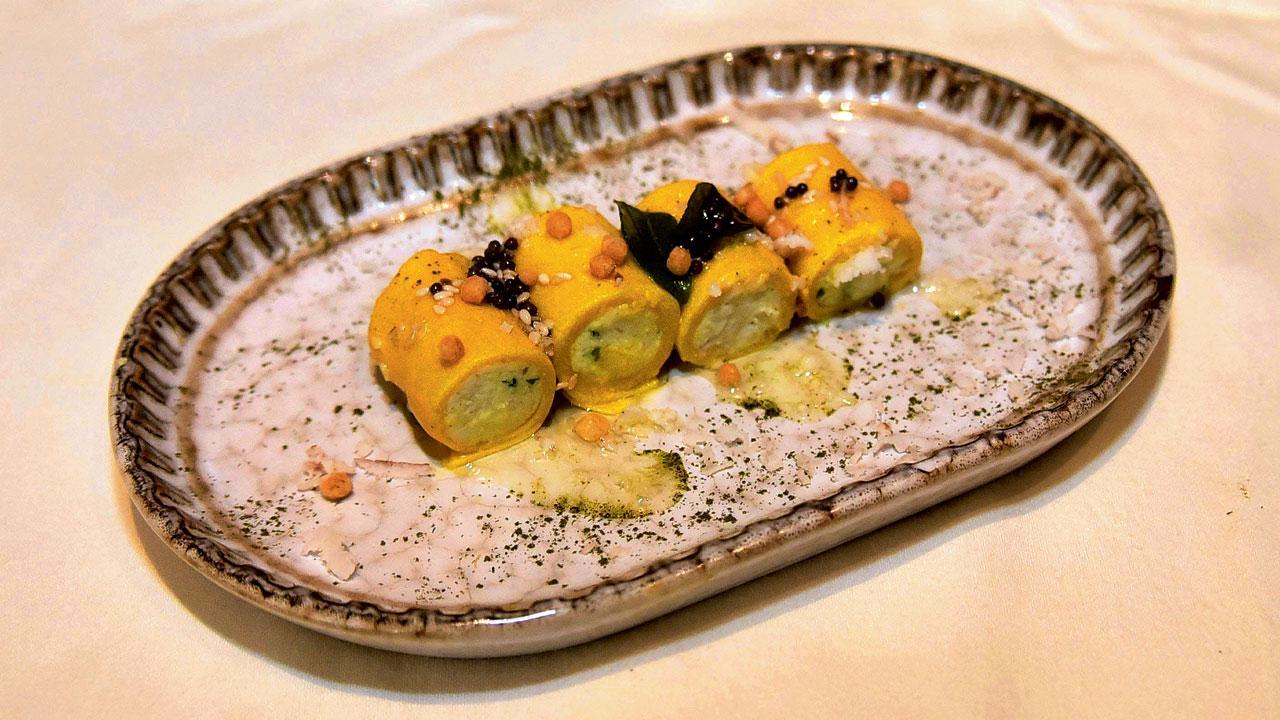Home / Sunday-mid-day / / Article /
Dubai's The Crossing pops up at JW Marriott Mumbai with neo-Indian flavours
Updated On: 23 October, 2022 07:27 AM IST | Mumbai | Nasrin Modak Siddiqi
A Dubai restaurant is offering nouveau Indian flavours to guests that remind them of home but not quite. Its collaboration with a Mumbai hotel transforms into a homecoming for desi ingredients but in an unrecognisable garb

Chhena khandvi
The adage, food unites, makes sense when we meet Jarret D’abreo, managing partner at Dubai’s iconic Indian eatery, The Crossing. A culinary popup at JW Marriott Mumbai’s Saffron, as part of the Masters of Marriott Bonvoy’s mission to bring the world’s best chefs to India, sees the Bombay lad return home to introduce us to neo-Indian flavours served in interiors inspired by the waiting lounges of India’s stations. This has managed to gather a fan following in Dubai.
The Crossing isn’t an Indian restaurant in the typical sense. This made the task tougher for Saffron’s executive sous chef Rohit Chadha, who had to source ingredients to ensure the replicated flavours stood close to the original.



